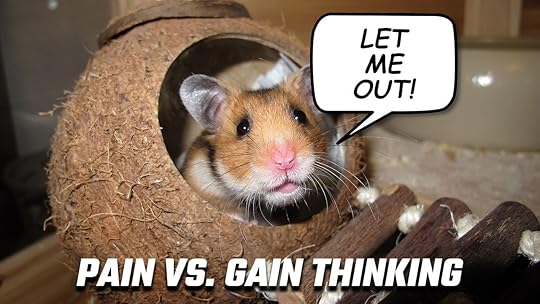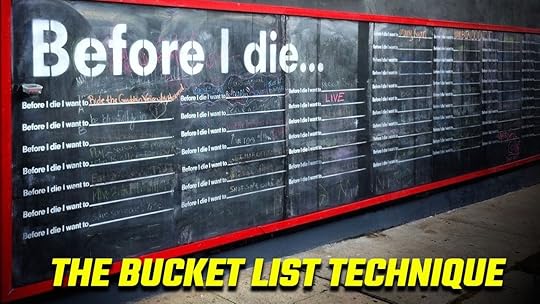How to Create An UNSHAKABLE Memory Palace Training Routine
 If you want to create an unshakable Memory Palace training routine, here’s the most important point:
If you want to create an unshakable Memory Palace training routine, here’s the most important point:
Your memory exercise routine needs to be immovable from your schedule.
Like a mountain.
Think for a second about what mountains represent:
Mountains symbolize strength, and they dominate the landscape. Mountains endure extreme weather, erosion, and yet remain sturdy.
Now, you may not think of your mind as being as sturdy and consistent as a mountain.
But when it comes to establishing memory ability and the mental power consistent memory training can create in your life, this level of sturdiness is possible.
All it takes is self-discipline, the application of the right techniques, and an established routine you love to maintain.

How do I know?
For one thing, I’ve recited the same passages from memory for nearly two and a half years (Ribhu Gita and Upadesa Saram).
For many years more, I’ve released podcasts, blog posts and videos with (almost) weekly consistency. Only a regular memory practice and personal discipline makes accomplishing such goals possible.
Along the way, I’ve interviewed and made friends with many of the best memory athletes and memory experts on the planet. They’ve inspired me on my mission to spread knowledge about memory techniques as far and wide as possible, and to keep up with memory training each and every day.
Here’s what I’ve learned about Memory Palace training routines along the way.

How To Topple The Biggest Barriers To Consistent Memory Training
First things first, you must master your mindset.
This step will help you eliminate the pain people associate with training, and the flight mode the fear of pain places people in.
Listen, I know it’s easy to get overwhelmed when you’re building your first Memory Palace Network.
Heck, for some people, even the first Memory Palace can be a challenge.
That’s why I created this free course and separated it into smaller and simpler steps:
But here’s the truth:
Even the simplest course in the smallest amount of steps will still challenge you.
Not only is challenge to be expected…
It’s normal! Authentic brain exercise that leads to better memory must be a challenge. Otherwise, you won’t grow.
This fact (one that all scientists and top performers acknowledge) means that challenges are never a reason to accept defeat.
Yet… I’ve heard the same complaint a thousand times:
“Oh this is so much work.” “How will I ever have time for this? What if it doesn’t work?”

How To Escape The “Pain Vs. Gain” Hamster Wheel
Well, what if?
Mental mastery starts with giving up fear of the unknown.
Why is this so important?
Because life is – and always will be – filled with unknowns!
For example, I just started memorizing Chinese characters.
All of a sudden, my brain starts melting under questions for which there is no answer:
What if I spend time on characters I won’t use?
What if I don’t have enough Memory Palaces?
What if I give up?
What if, what if, what if…
The good news is:
I know how to shut these questions about the unknown off. And I can help you. Here’s how:
You need to separate your “pain thoughts” from your “gain thoughts.”
After all, the dread created by thoughts of “so much work” erases the promise of what you stand to gain.
Plus, you can get all kinds of interference, as memory scientists call it, just one of many causes of forgetting.
How To “Flip The Script”
Instead of focusing on the pain, flip the script. Ask instead:
“What if I actually had a fully functional Memory Palace Network and could memorize information quickly? AND not only memorize it, but have it at my fingertips, when I need it?”
Replace focus on the pain with a serious grasp on the outcomes, the benefits, and the goals needed to help you create your first Memory Palace Network. Then create the simple systems that will help you achieve those goals.
Want proof that the Memory Palace technique works? This memory science makes it undeniable! All you need to bring is the practice. The tips below will help. Keep reading!

Fight Vs. Flight:
How to Raise The Fists Of Your Memory And Keep Punching
Are “fight” or “flight” behaviors typical for you?
If you’re not sure, think about the last time you faced a really big challenge.
Did you dive in, or did you sit still and further cement your status as a “couch potato?” through more inactivity? (Let me know in the comments below if you wish.)
Now think about creating that Memory Palace Network (here are some varying examples of this memory technique to help you).
Do you see it as a challenge you can rise to or something to run from?
If you’re running from it, see if you can’t craft a different story for yourself. See yourself diving into battle without fear, for example.
Such a simple shift in mindset really can enable you to make it happen instead of throwing your hands up in the air, admitting defeat and hiding your head in the sand.
You really can harness those runaway, unhealthy, defeatist thoughts. You just need to step back from your ego a bit and objectively view the nature of your thoughts. Or use this simple tip:
Contrary to popular belief, this form of self-inquiry like this does not lead to paralysis analysis.
Instead, an honest analysis of how your mind creates fears and endless self-doubt really can help you take action. You really can start to understand that the barriers you face are really just thoughts in your mind. Walking meditation can help if you don’t like asking and answering these kinds of questions while sitting still.
In all cases, you must take action in order to fully understand how memory techniques work.
Put it this way:
How would you know that you can’t lift Thor’s hammer until that you’ve actually had the handle in your grip?
This is where having a proper mindset separates the wheat from the chaff.
You must have an “all-in” attitude. You’ve got to go for it with laser-focused intent.
The only question is… how do you develop the mindset that allows you to leave your fear and overwhelm about such a “big task” behind?

Use The World’s Most Powerful Cliché And Find Your “Why”
“Know your why” is a cliché, to be sure.
But it works for a reason, and not just because it’s identifiable and relatable.
Thinking about your why causes you to take a long, hard look at your reason behind doing anything, much deeper than surface level reasons like looking smarter or getting a raise.
For this reason, every time we think about our Memory Palace training routines, we will do very well to revisit our why.
How To Dig Into Your Why
Ask yourself “What do I really need these techniques for?”
It is to become a memory champion? To pass exams? To learn languages?
Is it that you want to be able to deal with a large volume of information, or are you more concerned with the speed at which you’re learning and retaining information?
Next, dig deeper.
I recommend that you look for at least five levels of why.
These reasons do not necessarily have to be in a hierarchy of importance. It’s just important that you have enough fuel to draw upon when times get tough or other priorities start to compete with your memory training schedule.
Example of Five Levels Of Why
For example, here are my five levels:
To grow the garden of my knowledge through multiple layers of connection
To deepen my understanding of how world history and philosophy connect
To correct errors where they exist and increase factual accuracy
To increase cultural understanding and communication through ongoing language learning
To maintain brain health through continual brain exercise
You might struggle at first to reach five reasons. Keep practicing and you’ll get there.

The Bucket List Technique
Another way to find your why involves creating a “bucket list.”
Think of the things you would really like to do, and then ask yourself “Why would you like to do them?”
Then ask yourself “Why else?” and repeat.
If you can’t figure out five reasons, or five whys, why you want to do a thing… what are you even bothering wanting to do it for? Do you really want it after all?
This high level “why” will help you not to waste time on training for things you don’t actually want to do, because your training will fall apart if you don’t actually want the goal you set out for.
Do you have to stop at five?
Of course not.
But when you have at least five, you’ll discover it’s easy to complete the next, crucial step: Crafting a Vision Statement.
And as you can see from Joe’s email and extract from his Memory Journal after he watched the video above, this technique really works:

Vision Statement from Joe’s Memory Journal
“Hey professor




